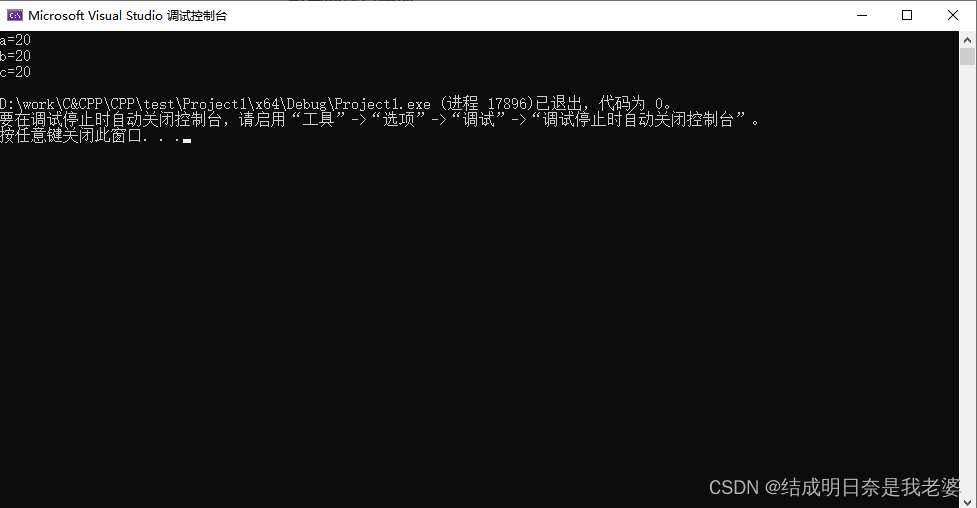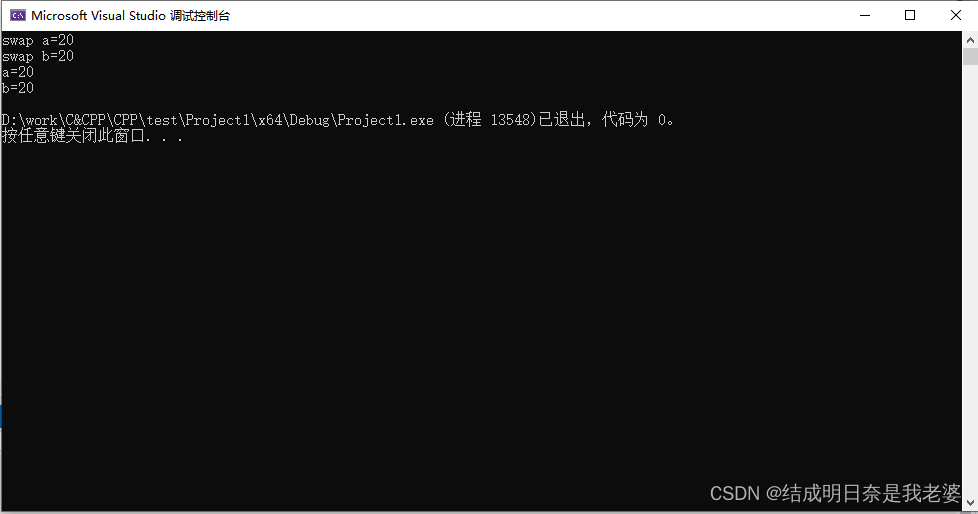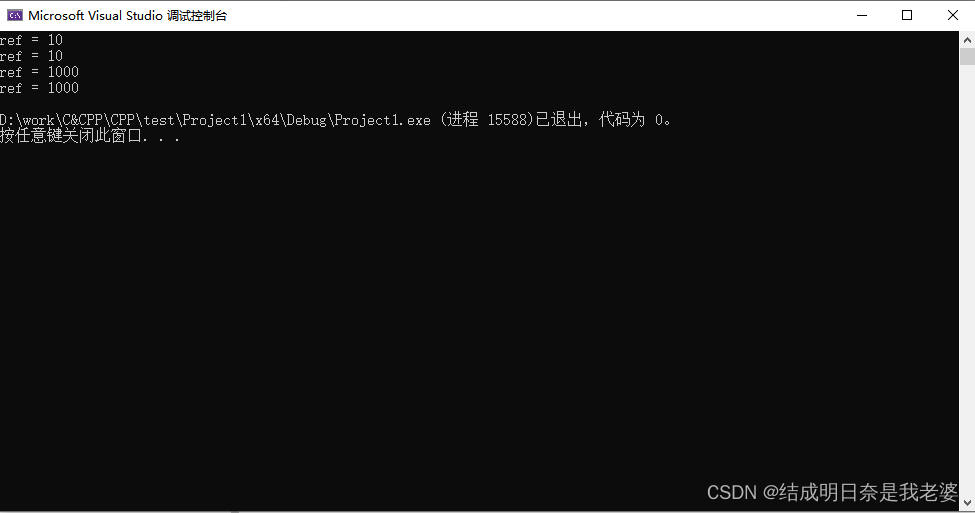作用: 给变量起别名
语法:数据类型 &别名 = 原名;
基本用法
int a = 10;
int &b = a;
俩者使用的都是
10的内存空间
引用的注意事项
- 引用必须初始化
- 引用在初始化后,不可以改变
#include <iostream>
using namespace std;
int main() {
int a = 10;
int b = 20;
int &c = a;
c = b; // 相当于把c和a都指向那块b的内存
cout << "a=" << a << endl;
cout << "b=" << b << endl;
cout << "c=" << c << endl;
}

引用做函数参数
#include <iostream>
using namespace std;
void mySwap03(int& a, int& b) {
int tmp = a;
a = b;
b = a;
cout << "swap a=" << a << endl;
cout << "swap b=" << b << endl;
}
int main() {
int a = 10;
int b = 20;
mySwap03(a, b);
cout << "a=" << a << endl;
cout << "b=" << b << endl;
}

引用做函数的返回值
引用是可以作为函数的返回值存在的
注意: 不要返回局部变量引用
int& test01(){
int a = 10;
return a;
}
int main(){
int &ref=test01();
cout << "ref = " << ref << endl; //第一次结果正常,因为编译器做了保留
cout << "ref = " << ref << endl;//第二次结果错误,因为a的内存已经释放
return 0;
}
函数的调用可以作为左值
int& test02(){
static int a = 10; //静态变量,存放在全局区(在程序结束后系统进行释放)
return a;
}
int main(){
int &ref = test02();
cout << "ref = " << ref << endl; //ref是a的别名
cout << "ref = " << ref << endl;
test02() = 1000; //函数的调用以在等号的左边出现,操作的是a
cout << "ref = " << ref << endl;
cout << "ref = " << ref << endl;
return 0;
}

引用的本质
引用的本质就是一个指针常量
引用一旦初始化后就不可以发生改变
常量引用
作用: 常量引用主要修饰形参,防止误操作
//加上const之后 编译器代码修改 int temp = 10;const int &ref=temp;
const int &ref=10;//引用必须是一块合法的内存空间
//ref = 20; //加入const后变为只读,不可修改
#include <iostream>
using namespace std;
void showValue(int& val) {
val = 1000;
cout << "val=" << val << endl;
}
int main() {
int a = 100; //这块a也会改变,指向1000
showValue(a);
}
为了防止这种误操作
#include <iostream>
using namespace std;
void showValue(const int& val) {
cout << "val=" << val << endl;
}
int main() {
int a = 100;
showValue(a);
cout << a << endl;
}